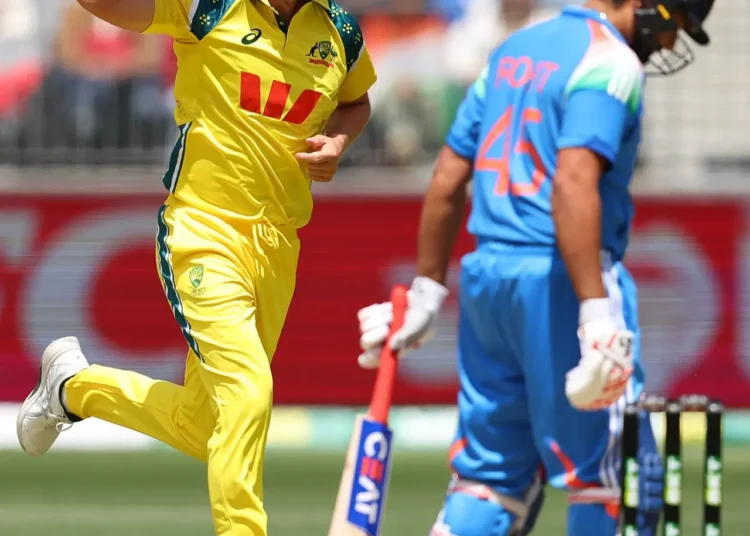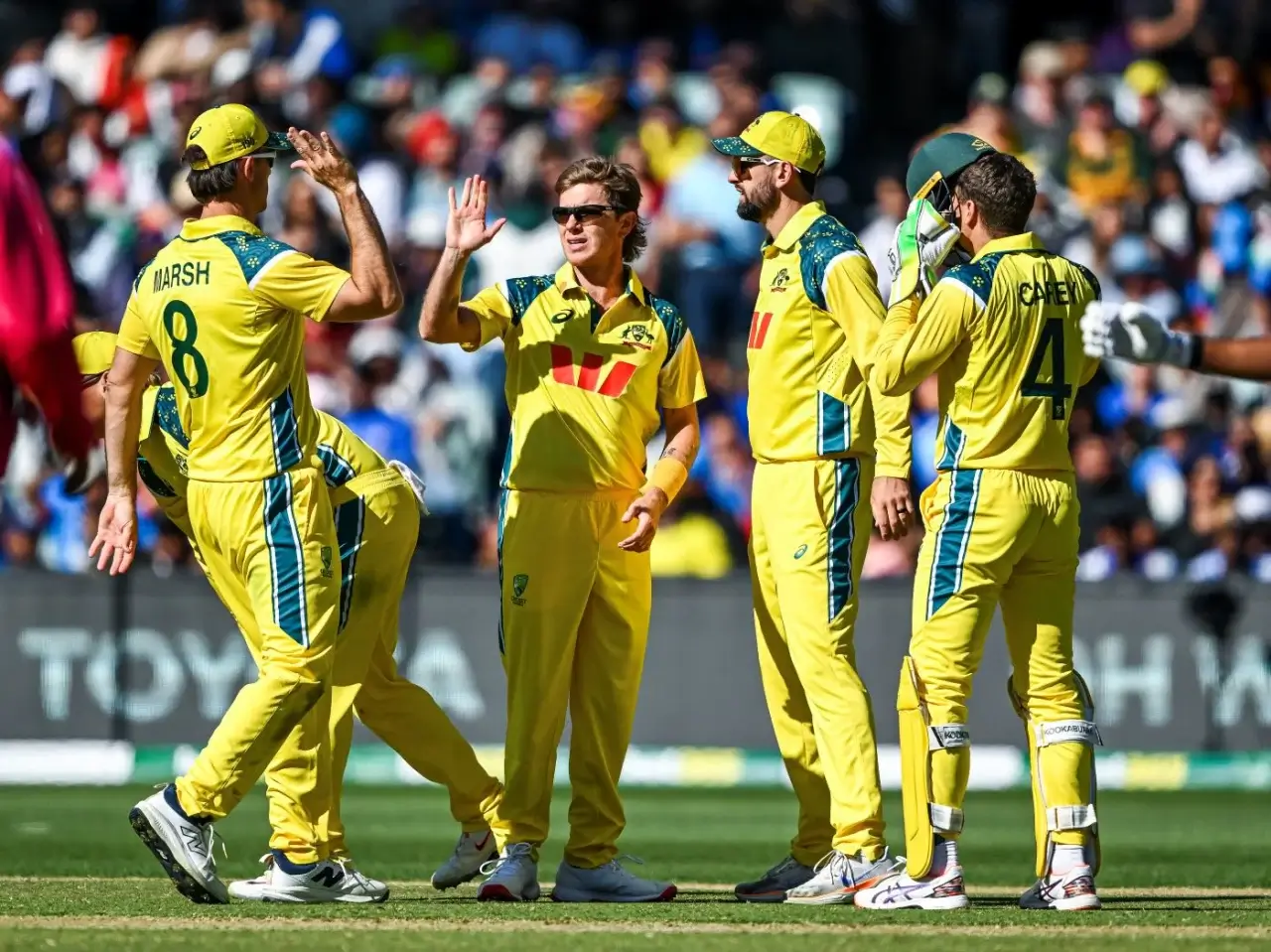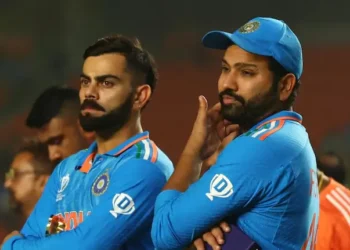Australia’s white-ball dominance has grown sharper with every game this series. Their young guns have stepped up while India searches for answers. The third ODI at SCG is more than a formality now. It’s about pride, history, and the right to respond.
Shubman Gill’s first ODI captaincy test has turned rough. Back-to-back defeats have shown India’s top-order weakness against swing and seam. Without Hardik Pandya, the balance looks off, and the middle order is exposed. Fans now wonder whether fresh faces like Yashasvi Jaiswal or Kuldeep Yadav might finally get a game.
For Australia, every plan has worked to perfection. Josh Hazlewood’s control and Matt Short’s composure have steadied them in key moments. Even Cooper Connolly and Matt Renshaw have added grit and flair. Now they aim for something that’s never been done — a bilateral ODI clean sweep over India.
Confident Australia hunts a record-breaking clean sweep
Australia’s morale couldn’t be higher heading into the Sydney clash. They’ve shown balance, aggression, and unmatched control with both bat and ball. Josh Hazlewood has been the series star, making life miserable for India’s batters. His precise movement has forced Rohit Sharma and Virat Kohli into repeated errors against the Australian team.
Selectors have smartly rotated players to manage workloads. The addition of Jack Edwards brings another versatile option. His all-round skill was highlighted on the Australia A tour of India, where he scored runs and took wickets consistently. This gives Mitchell Marsh the flexibility to rest a senior pacer like Starc.
The mix of youth and experience feels perfect. Matt Renshaw’s return to the one-day setup after nine years has clicked instantly. He’s adapted calmly, playing supportive roles under pressure. At the SCG, Australia will rely on this blend to secure history — their first-ever ODI sweep over India.
How does squad rotation boost Australia’s winning formula?
One key to Australia’s success in this series has been strategic rest and rotation. Hazlewood and Starc could be given a breather for Shield duties. This opens the door for Nathan Ellis and Edwards to make an impact. Such planned changes keep the squad fresh without losing rhythm.
The inclusion of Matt Kuhnemann adds spin depth at Sydney. Though conditions are flatter now, the SCG still assists in the middle overs. These experiments help selectors test bench strength before bigger tournaments. For now, Australia’s system ensures constant readiness — and that’s what keeps them ahead of India.
India faces pressure and selection heat under Gill’s captaincy
India’s campaign has been underwhelming despite high expectations. Shubman Gill’s captaincy is under early scrutiny after two poor outings. His own scores of 10 and 9 reflect India’s larger problem — losing momentum early. With Virat Kohli suffering two ducks and Rohit Sharma lacking fluency, the top order feels fragile.
Without Hardik Pandya, the side lacks both a power hitter and a sixth bowling option. Persisting with the same XI in Adelaide backfired badly. Washington Sundar hasn’t delivered the expected all-round impact, while Axar Patel remains India’s lone bright spot with the bat. Prasidh Krishna and Kuldeep Yadav could add variety and attack.
Many fans want Yashasvi Jaiswal to get his first ODI chance under Gill. A left-hander at the top can change the batting rhythm. India also needs sharper bowling plans and positive intent at the crease. The SCG match is now a test of character more than skill, like against Bangladesh.
The small changes that could revive India’s momentum
India’s biggest lesson this series is adaptability. A single tactical shift can turn fortunes. Playing Kuldeep Yadav on a turning SCG pitch could trouble Australia’s middle order. Replacing Harshit Rana with Prasidh Krishna may also add bounce and accuracy.
India should consider moving Axar Patel up the order to accelerate scoring. If Yashasvi Jaiswal opens, Gill can drop to No. 3, easing early pressure. These tweaks aren’t radical — they’re logical fixes to restore rhythm. The challenge is executing them confidently under the watchful SCG crowd.
Sydney pitch, crowd energy, and match-day conditions
The Sydney Cricket Ground promises good batting conditions with light spin later on. Flat decks have been common recently, yet the surface slows down during the second innings. That’s why Adam Zampa and Kuhnemann will remain key middle-over options.
The forecast predicts clear skies and warm temperatures — ideal for cricket. Australia has won six consecutive ODIs at the SCG, scoring big every time. India, however, has only two wins here, in 2008 and 2016. This stat alone shows how tough the venue has been for visitors.
The crowd atmosphere will be electric, with a strong Indian turnout expected. Fans will cheer every boundary and roar for Kohli’s return to form. But sentiment alone won’t win games. India must start well in the power play and avoid collapses. The first 15 overs could decide the match’s fate.
Conclusion
The Sydney ODI will be remembered for more than just numbers. For Australia, a historic ODI sweep over India represents progress and planning. For India, it’s a moment of truth — to prove its resilience under new leadership. Gill’s captaincy, Kohli’s response, and Rohit’s form will all be closely judged.
Australia’s advantage lies in rhythm and resource depth. Every player stepping up shows the system’s strength. India, meanwhile, must rediscover their balance and self-belief. A new face like Jaiswal or a tactical shift with Kuldeep Yadav could spark revival.
Both teams know history is on the line. A sweep would mark Australia’s dominance, while a win could save India’s pride. The SCG crowd will witness whether experience beats momentum — or if India’s spirit finally breaks the streak.
















